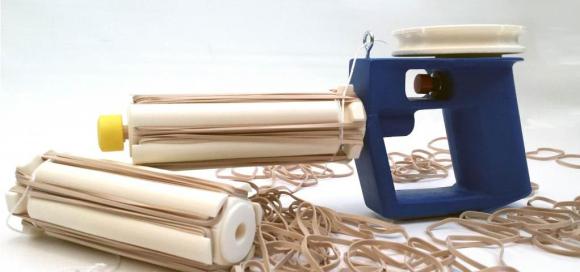
Office warfare has just been stepped up a notch and it’s time to hide in your cubicles! Enter the Rubber Band Blaster-32, a fully automatic rubber band handgun with switchable barrels for quick reloading.
It features a unique trigger release design that we haven’t seen before. By using a pull string release, [Dave] the inventor was able to load multiple rubber bands per barrel for individual firing, one by one. Hold down the trigger and as the firing wheel spins up, you can start shooting up to 10 rounds a second!
According to [Dave], reload time is around a minute per barrel, but the barrels can be stored loaded and ready to go, so pack a few mags and hang out behind the water cooler. That’s the last time [Bill] from accounting steals my stapler!
To see this puppy in action, sit tight after the break!
Continue reading “Rubber Band Blaster Shoots 10 Rounds A Second”















